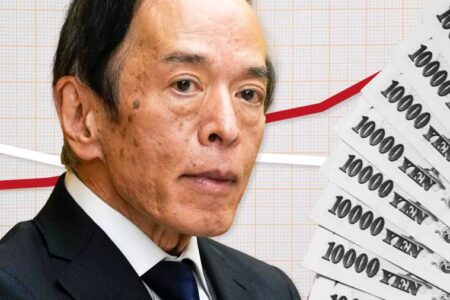Since becoming governor of the Bank of Japan this month, Kazuo Ueda has carefully signaled policy continuation. Few investors take his words seriously.
With the first change in the Bank of Japan’s governor in a decade, a break with the bank’s tradition with an academic at the helm, and inflation at multi-decade highs, the stage is set for change.
The Ueda Policy Council’s first meeting, which began Thursday, will provide important clues as to whether the 71-year-old economist is truly committed to the status quo or paving the way for an unraveling of Japan’s ultra-loose monetary policy regime.
Any change in policy would have huge repercussions for capital markets that have become accustomed to the Bank’s massive bond purchases and interventions to try to control interest rates. The immediate concern for investors is whether the Bank of Japan will revise or relinquish yield curve control, a policy it pioneered in 2016 to set interest rates on Japan’s benchmark 10-year government bonds at around zero percent.
Most economists expect Ueda to delay changing the YCC framework until the summer, though it may surprise investors by canceling it immediately while speculative pressure on Japanese bonds remains subdued.
The biggest question that will rule the five-year term of Ueda is whether the central bank is about to finally meet its 2 percent inflation target as prices and wages rise.
If there is enough certainty to reach the target, Ueda has already indicated that he will aim to get rid of the extreme policy tools deployed over the past decade that have expanded the Bank of Japan’s balance sheet to 120 percent of Japan’s GDP.
“Currently, the inflation trend is below 2 percent, so we will continue monetary easing,” Ueda told Parliament this week. If it is expected to reach 2 percent, we will move towards normalization. We will look closely so as not to misjudge the inflation outlook.”
Analysts warn that any exit strategy will require the Bank of Japan and the government to tackle a daunting list of issues before Ueda can actually implement it without destabilizing global financial markets.
“Dealing with the fallout from quantitative and qualitative monetary easing will be costly, and it will be a very difficult balancing act,” said Ayako Fujita, chief Japanese economist at JPMorgan Securities.
If Ueda revises or abandons the YCC in the coming months, the Bank of Japan is expected to revise negative interest rates, which Japan alone maintains.
But removing the -0.1 percent deposit rate is also expected to be a slow process given the potential impact on the stock of floating-rate household mortgage debt, which has escalated since the policy was introduced in 2016.
And the massive asset-buying program under Ueda’s predecessor Haruhiko Kuroda left the Bank of Japan owning more than half of Japan’s government bonds and locally listed exchange-traded fund assets.
Paper losses on their bond holdings will increase exponentially as interest rates rise, but these losses are unlikely to translate into realized losses since the bonds can be held to maturity.
On the other hand, ETFs don’t mature, so the Bank of Japan, now the largest investor in Japanese stocks, takes a hit if stocks fall sharply. Despite raising its target for annual ETF purchases to 12 trillion yen ($90 billion) in 2020 to support the economy during the pandemic, the Bank of Japan has significantly scaled back buying and gained 140 billion yen this year.
“Because the ETF’s exit strategy has the potential to destabilize the stock market, the Bank of Japan is likely to treat it with particular care, and full discussions on the matter may not begin until Governor Ueda’s term ends,” wrote Naohiko Baba, Japan economist at Goldman Sachs. , in a report.
Another major risk factor is a possible recession in the US if inflation remains high and the Federal Reserve returns to aggressively raising interest rates, which will put selling pressure on the yen again.
An indirect slowdown in the Japanese economy could kill the momentum of inflation, just as price hikes have begun to widen beyond the increase in imported energy costs caused by the war in Ukraine.
In March, so-called core consumer prices, excluding all food and energy, rose 2.3 percent, casting doubt on the BoJ’s argument that inflation is not driven by core consumer demand and is likely to fall below its target in March. later this year.
“We’re starting to say this time might be different,” said Masamichi Adachi, an economist at UBS, citing larger-than-expected salary increases agreed to by large companies and companies’ willingness to raise prices to reflect rising costs. “But we are not in a position where we can say with confidence that this time is different.”
